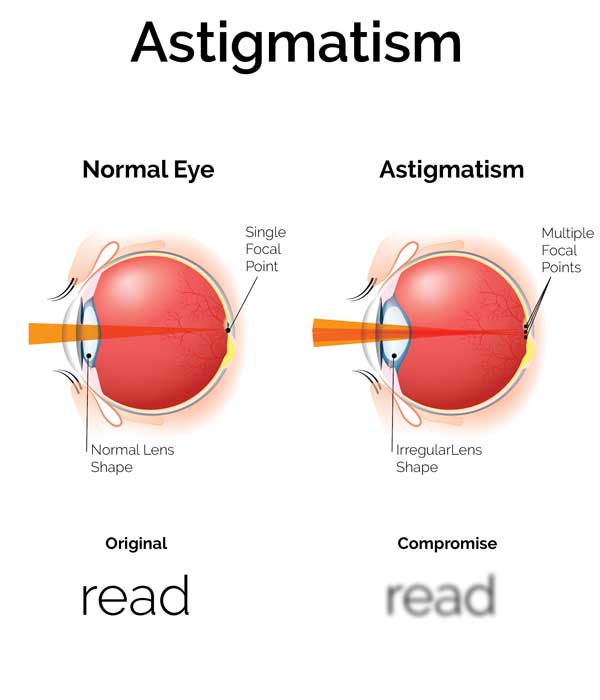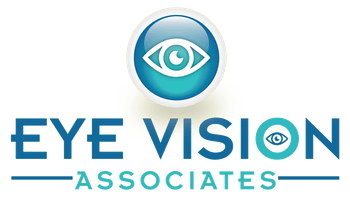I wanted to discuss astigmatism because it is very common. In fact most people wearing glasses and reading this now have at least some small amounts! Many doctors like to explain astigmatism to patients by telling them that their eye is “shaped more like a football than a baseball”, so in other words astigmatism has to do with the shape of your eye. But what exactly does that mean for your vision and how do we correct that in your glasses or contact lenses?
First, we have to discuss how the eye processes an image. Your eye works a lot like a camera. Light comes in through the cornea and lens to a focal point that lands on your retina.

If you are nearsighted or myopia then your retina is elongated/stretched and the image falls in front of the retina. The opposite is true for farsighted or hyperopia, the eye is smaller and the image falls behind the retina. With astigmatism, because of that oval shape the image splits! These images can be in front, behind, or both in the same eye.
Patients with astigmatism tend to squint a lot to reduce the blur they see. Astigmatism is notorious for giving people glare, halos, eye strain, and headaches. It can be the cause of poor night vision and/or computer fatigue and discomfort.
Some people only need to correct their astigmatism for certain tasks and others need it corrected full time. If you look at the Rx below:
OD -3.00 sph
OS -3.00 -1.00 x180
The right eye (OD) does not have astigmatism. This eye has one power over the whole lens that redirects the light to focus properly on the retina and is spherical. The left eye (OS), however, has different corrections to compensate for the shape of the eye and this brings the split image together.
Astigmatism can be in any amount at any axis between 0 and 180 degrees. It can decrease or increase with age or change axis.
If you have any questions or topics you would like to hear about please let us know!
